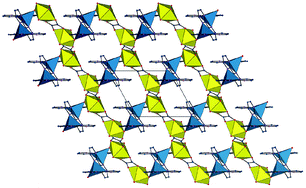Uranyl–copper(ii) heterometallic oxalate complexes: coordination polymers and frameworks†
Abstract
Five oxalate complexes containing both uranyl and copper(II) ions and

* Corresponding authors
a
CEA, IRAMIS, UMR 3299 CEA/CNRS, SIS2M, LCCEf, Bât. 125, 91191 Gif-sur-Yvette, France
E-mail:
pierre.thuery@cea.fr
b
ICMMO, UMR 8182, Bât. 420, Université Paris-Sud, 91405 Orsay, France
E-mail:
eric.riviere@u-psud.fr
Five oxalate complexes containing both uranyl and copper(II) ions and

 Please wait while we load your content...
Something went wrong. Try again?
Please wait while we load your content...
Something went wrong. Try again?
P. Thuéry and E. Rivière, Dalton Trans., 2013, 42, 10551 DOI: 10.1039/C3DT51020D
To request permission to reproduce material from this article, please go to the Copyright Clearance Center request page.
If you are an author contributing to an RSC publication, you do not need to request permission provided correct acknowledgement is given.
If you are the author of this article, you do not need to request permission to reproduce figures and diagrams provided correct acknowledgement is given. If you want to reproduce the whole article in a third-party publication (excluding your thesis/dissertation for which permission is not required) please go to the Copyright Clearance Center request page.
Read more about how to correctly acknowledge RSC content.
 Fetching data from CrossRef.
Fetching data from CrossRef.
This may take some time to load.
Loading related content
